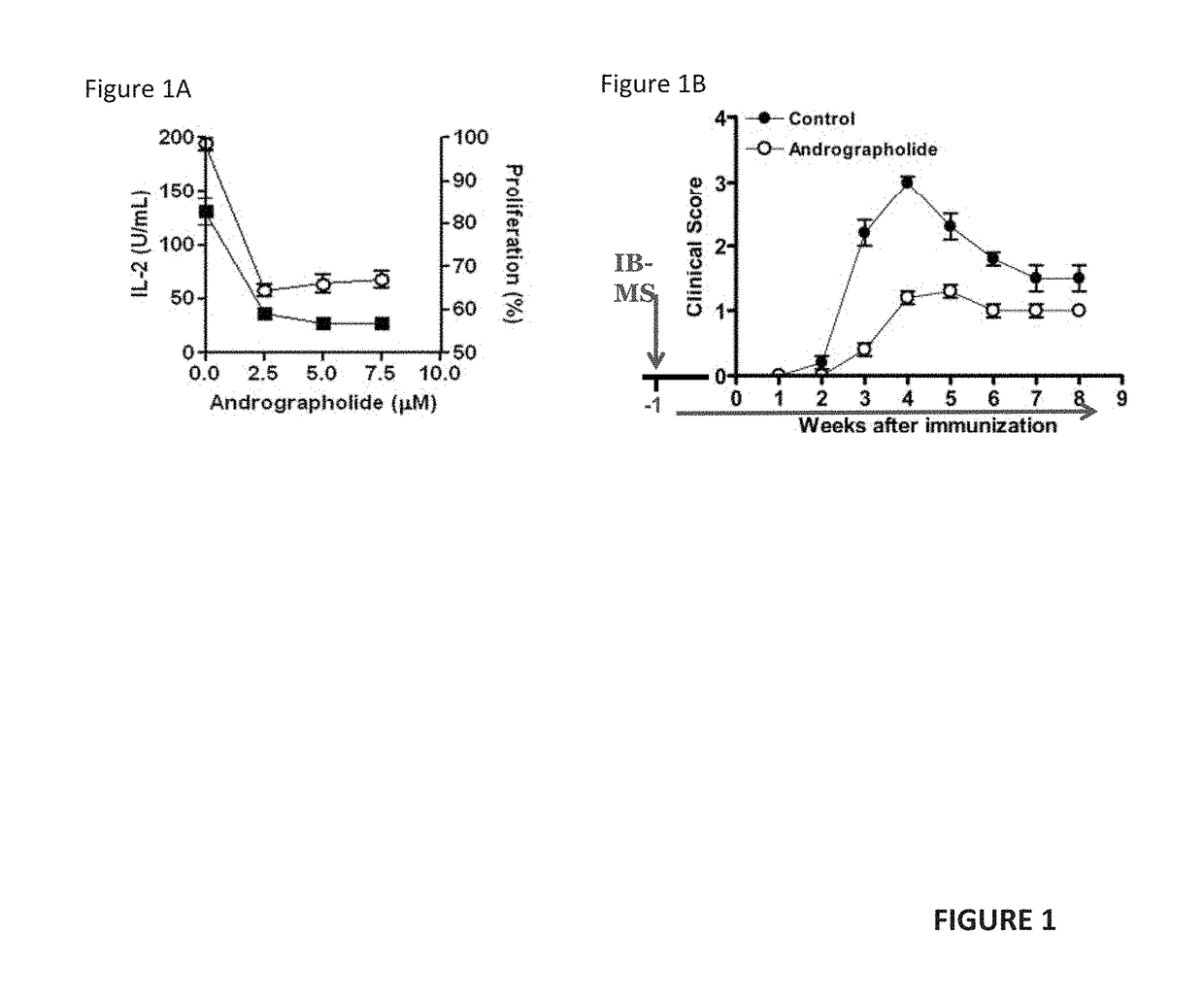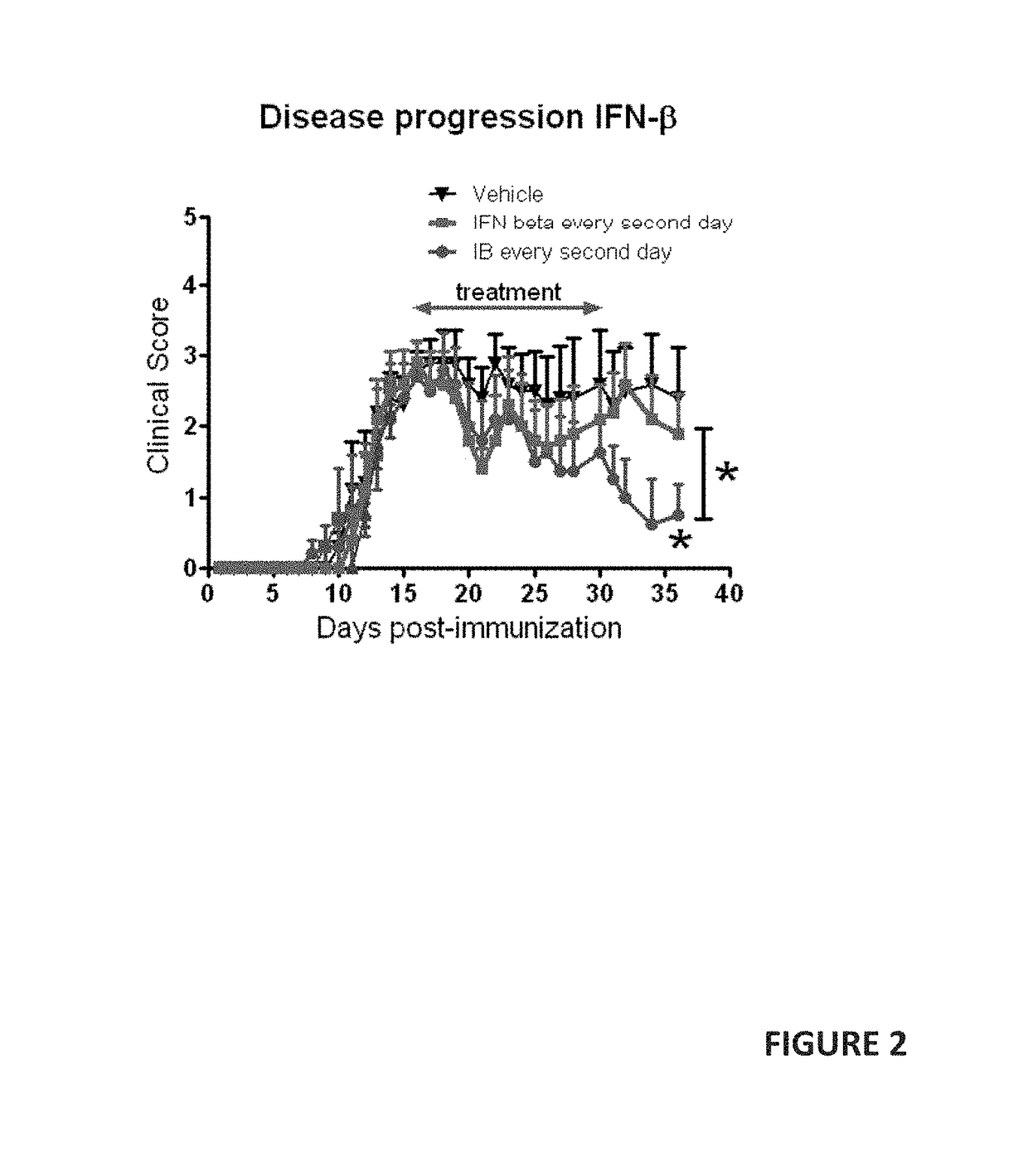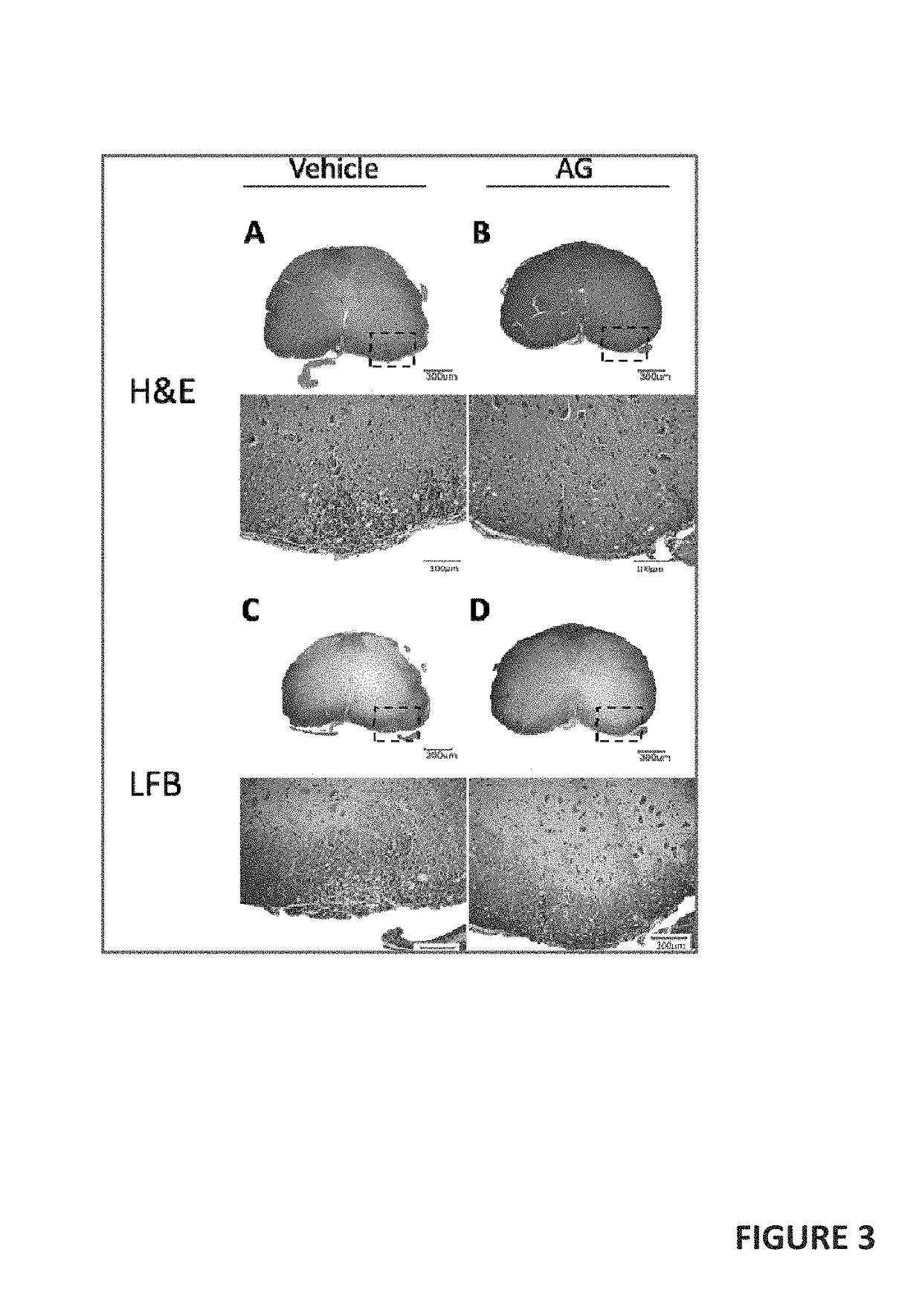Andrographolide Treats Progressive Forms of Multiple Sclerosis
a technology of andrographolide and multiple sclerosis, applied in the direction of drug composition, peptide/protein ingredients, nervous disorders, etc., can solve the problems of affecting the treatment effect, affecting the ability of parts, and affecting the progression of brain atrophy, so as to reduce improve the treatment effect. , the effect of reducing the risk of recurren
- Summary
- Abstract
- Description
- Claims
- Application Information
AI Technical Summary
Benefits of technology
Problems solved by technology
Method used
Image
Examples
Embodiment Construction
[0049]The details of our clinical study are described in U.S. Provisional patent application Ser. No. 62 / 347,218 (filed 8 Jun. 2016), incorporated here by reference. While that study was designed as a 24-month study, interim results after only 12 months of treatment show statistically-significant efficacy. Our interim results show that in the treatment of Secondary Progressive (SP) and Primary Progressive (PP) forms of Multiple Sclerosis (MS), remyelination, and neurogenesis are stimulated by oral administration of andrographolide-class compounds.
[0050]There are 3 components of the Multiple Sclerosis Functional Composite (MSFC) disease activity index: function of the legs, function of the arms and cognitive function. The corresponding tests are a 25 feet (7.6 m) walk; test of 9 holes and pin and the Paced Auditory Serial Addition test 3 (PASAT3). Multiple attempts will be made of each test in each visit. The MSFC score and the scores of the 3 sub-scales and the change from the basal...
PUM
| Property | Measurement | Unit |
|---|---|---|
| distance | aaaaa | aaaaa |
| distance | aaaaa | aaaaa |
| time | aaaaa | aaaaa |
Abstract
Description
Claims
Application Information
 Login to View More
Login to View More - Generate Ideas
- Intellectual Property
- Life Sciences
- Materials
- Tech Scout
- Unparalleled Data Quality
- Higher Quality Content
- 60% Fewer Hallucinations
Browse by: Latest US Patents, China's latest patents, Technical Efficacy Thesaurus, Application Domain, Technology Topic, Popular Technical Reports.
© 2025 PatSnap. All rights reserved.Legal|Privacy policy|Modern Slavery Act Transparency Statement|Sitemap|About US| Contact US: help@patsnap.com



